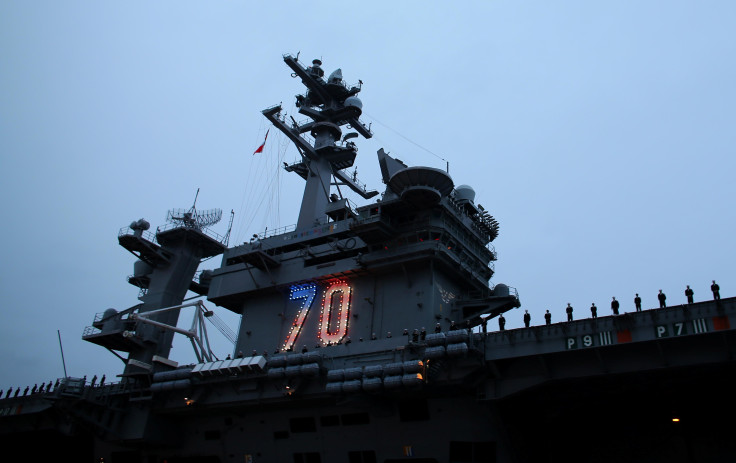South China Sea: US Carrier Group Brings More F-35 Stealth Fighters Into Tense Region

The U.S. and its allies seem to be making sure there are enough advanced F-35 stealth fighters in the South China Sea.
The U.S. Navy sent one of its Nimitz-class carriers into the disputed waters earlier this week, adding to its teeth in the region in the form of F-35C Lightning II stealth fighter jets. The carrier and its strike group are carrying out maritime security operations in the region. In addition to the Carl Vinson, the strike group also includes the Ticonderoga-class guided missile cruiser USS Lake Champlain, destroyer USS Chafee and combat ship USS Tulsa.
The carrier group is in the South China Sea barely a week after China passed a new maritime law aiming at exerting its control over the disputed waters. It is also the sixth time that a U.S. aircraft carrier has entered the region this year.
The F-35C is a variant that can carry more fuel and weaponry and is built for catapult launches and fly-in arrestments. The advanced stealth fighters add to U.S. military capabilities in a region where Beijing has raised the temperatures with vast maritime claims and military drills designed to invade Taiwan, which it considers as a breakaway province that has to be reunited with the Mainland.
China has steadily built up its military capability in the region, building more warships and even military bases in the Spratly Islands, which are also claimed by other littoral states. It has also used various tactics to bully other regional states, using everything from militia-operated fishing boats, coast guard ships, aircraft carrier groups and intrusions by warplanes.
The U.S. has rejected China's claims over the disputed waters and sailed several so-called Freedom of Navigation patrols in the South China Sea. The latest to carry out the patrol was the Arleigh Burke-class destroyer USS Benfold.
A photo released by the U.S Navy on Tuesday showed F-35Cs assigned to the "Argonauts" of Strike Fighter Squadron (VFA) 147 launching from the Carl Vinson.
The U.S. and its allies seem to be making sure there are enough advanced stealth aircraft in the region. The Royal Navy recently sent its aircraft carrier HMS Queen Elizabeth and strike group through the South China Sea. Onboard the carrier was, again, the F-35s — a blended air wing of U.S. Marine and U.K. Royal Air Force units.
Japan, which has faced increased provocation from the PLA air force, is also buying the F-35s from the U.S., which include 63 F-35A conventional takeoff and landing aircraft and 42 F-35 short takeoff and landing variants.
The presence of the carrier strike group has irked China, which has put its forces in the region on "high alert." The state-backed Global Times called the U.S. aircraft carrier's deployment in the South China Sea as "provocative moves aimed at China, and they could be coordinated with the UK's HMS Queen Elizabeth aircraft carrier, which was operating near Japan."
Meanwhile, the Royal Navy’s Carrier Strike Group recently carried out a joint drill with South Korea, which included F-35 fighter aircraft. The exercises were held “to work seamlessly together by practicing techniques, tactics, and procedures which included mid-air refueling," reported The Defense News.

Photo: Mike Blake/Reuters





















